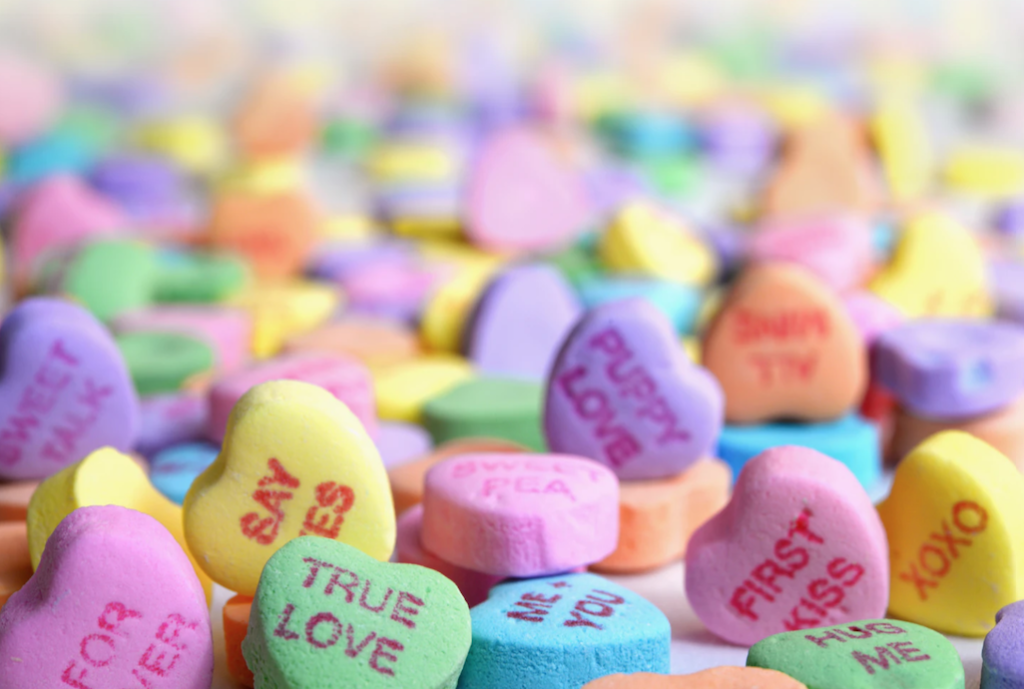On Valentine’s Day – What is Love?

For many people, Valentine’s Day is a time to celebrate romantic love. Partners might express gratitude for their special person. Couples might reminisce about how they met and fell in love. But for those whose partners yell at them, diminish them, or hurt them physically, Valentine’s Day can be a painful reminder that their relationship is not a celebration of love. Even if the abusive partner is in the Honeymoon Phase (better described as Manipulative Kindness), the survivor knows that the smiles and nice gestures won’t last. As is true on other holidays, domestic violence continues on Valentine’s Day, leaving survivors wondering if what they’re experiencing is really love.
What’s Love?
A common topic in counseling at Genesis is the exploration of healthy vs. unhealthy relationships. Many of us learned as children that if a boy pulls a girl’s ponytail, that means he likes her. In adolescence, we’re told that if a guy gets mad when his girlfriend sits next to another guy in class, his rage of jealousy is acceptable because it shows how much he loves her. And as adults, a man who flirts with multiple women is cool but if a woman were to do that, she’s impure. These myths contribute to society’s minimization and justification of intimate partner violence. The underlying message is that love hurts. So when an abuser says to his partner, “I hit you because I love you too much” or “I want you all to myself to show you how much I love you,” his gaslighting words confuse his partner. She’s left doubting herself, dismissing her beliefs that love includes equality and safety.
In healthy relationships, both partners feel safe and free to have their own opinions, express their perspectives, and voice their feelings without being shamed, blamed, or minimized. People in healthy relationships don’t have to ask for permission to spend time with friends and family without their partner, and there are no repercussions for doing so. Healthy partners encourage space and time for personal growth. Both partners trust that their significant other won’t hurt them physically or emotionally. They can tell each other their innermost dreams and fears in confidence. And when conflict arises in a healthy relationship (because it always will), both partners are able to be honest, take personal accountability, and work together to find a solution or compromise that is in both of their best interests. Conflict is healthy and normal in a relationship. Belittling, name-calling, and intimidating is not. When teaching children and adolescents about healthy relationships, I like to use One Love Foundation’s #thatsnotlove couplets found on YouTube.
Types of Love
Although Valentine’s Day is centered on romantic love, I often talk with my clients about other types of love during this time of year. The rights and patterns of healthy relationships explained above also apply to the love between a parent and child, between siblings, between friends, and the love we show ourselves. Domestic violence is the deliberate and systematic diminishment of a woman, decreasing her self-confidence and sense of self-worth. These powerful effects of abuse can be mitigated as she engages in self-care and internal resource building exercises. Self-care activities are the same as coping skills, but they are done before a crisis or difficulty, rather than during or after. Practicing self-care helps you feel more capable of handling a bad day; it can also lessen the negative impact of another person’s abuse towards you. Healing from domestic violence involves building a support system and engaging in healthy relationships with others. Experiencing loving and safe relationships with friends and family creates templates that help survivors of abuse discern possible red flags of abuse in future partners.
The Five Love Languages
Now that we know what healthy love looks like, it’s helpful to know how to show it. One of my favorite ways to teach about the healthy expression of love is using Dr. Gary Chapman’s The Five Love Languages. In his books, he outlines five ways, or “languages,” we feel and receive love: words of affirmation, acts of service, quality time, receiving gifts, and physical touch. Our job is to learn which language our partner or child or friend or coworker “speaks,” and then use it to show them how much we care. For example, if my sister’s love language is spending quality time together, no matter how many gifts or hugs I give her, she will not fully internalize my love for her until I spend time with her. Utilizing this model will also aid in our pursuit of self-care. When we identify how we feel loved and important, we can plan activities accordingly: a hike with a friend if our love language is quality time, or a phone call with a parent for words of affirmation.
Our Valentine’s wish for you this year is safety and healing, and the knowledge that love can and should include equality and safety. If you have questions about if your relationship might be unhealthy or dangerous, call our Outreach Office at 214.389.7700 to schedule a free intake appointment with a masters-level counselor. We are offering all of our intake services in-person or via telehealth, so we’re happy to connect with you in the way that feels most comfortable to you.
Written by Ruth Guerreiro, LCSW, Sr. Director of Clinical and Non-Residential Services at Genesis Women’s Shelter & Support.
